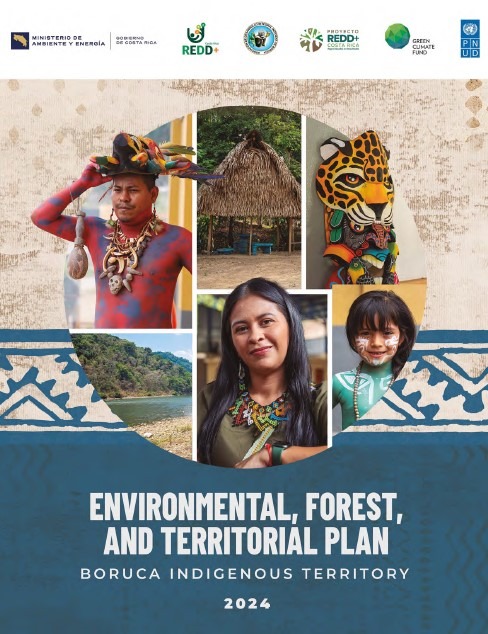
Environmental, forest, and Territorial Plan Boruca Indigenous Territory
Colaboradores:
González Céspedes, Jimmy (Compilador)
Rojas Maroto, Donald (Compilador)
Rojas Morales, Yanory (Compilador)
Chinchilla Campos, Vanessa, Vanesa (Traducido porv)
Editorial:Programa de las Naciones Unidas para el Desarrollo
Materia:Tierras forestales
Público objetivo:General
Publicado:2024-10-31
Número de edición:1
Tamaño:7.69Mb
Soporte:Digital
Formato:Pdf (.pdf)
Idioma:Inglés
Libros relacionados
Plan Ambiental, Forestal y Territorial. Territorio Indígena Conte Burica - Asociación de Desarrollo Integral de Conte Burica
Plan Ambiental, Forestal y Territorial Indígena Tayní - Asociación de Desarrollo Integral indígena Tayní
Plan Ambiental, Forestal y Territorial. Territorio Indígena Cabécar Alto Chirripó - Asociación de Desarrollo Integral de Cabécar Alto Chirripó
Plan Ambiental, Forestal y Territorial. Territorio Indígena Zapatón - Asociación de Desarrollo Integral de Zapatón
Reseña
This Environmental, Forest, and Territorial Plan of Boruca (EFTP Boruca) was developed from the vision
and traditional knowledge of the Brunca people, applying the right to consultation, with the participation
of representatives from community organizations in sectors such as the elderly, women, youth, cultural,
productive, environmental, economic, and other specific community groups, as well as the general Indigenous population. The development of the EFTP Boruca was based on the results of the consultation on REDD+ in Boruca and the consultation of the plan itself, in which the representatives of the sectoral community organizations worked, the community groups and the indigenous population in general. The Indigenous Integral
Development Association of Boruca (ADIBORUCA) and the Territorial Indigenous Consultation Body (ICTI, for its acronym in Spanish) were responsible for updating and refreshing the consultation and developing of the EFTP of Boruca. Within the framework of the REED+ National Strategy Consultation, the discussion and update of the five special topics (with a view to the holistic relationship of the cosmogonic pillars and towards the long-term future of Boruca’s development), the EFTP Boruca is a ten-year term plan and makes proposals for different time periods on strategic issues prioritized for the good living, specifically: territorial security, territorial governance, resource conservation, indigenous economy, strengthening of the Brunca identity, Brunca knowledge, monitoring and evaluation, women, youth, administration and implementation of the EFTP Boruca. The plan is accompanied by a set of strategies for its implementation.
To reach the EFTP, Boruca followed up on the contribution to territorial development, which, from the
perspective of indigenous development, the organizational structures and communities of the territory
have been collectively making, such as: ADIBORUCA, sectoral community organizations (for the elderly,
women, mixed groups, youth, cultural, productive, environmental, economic, consultation, and others),
community groups, others and the indigenous population in general.




